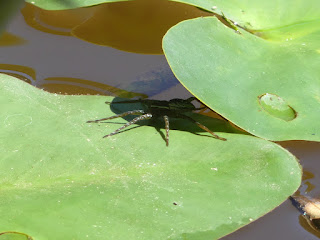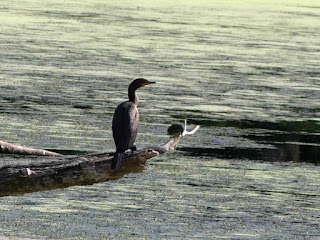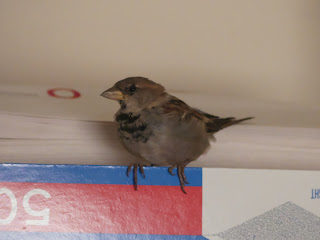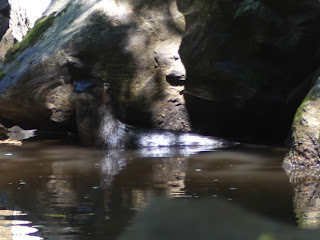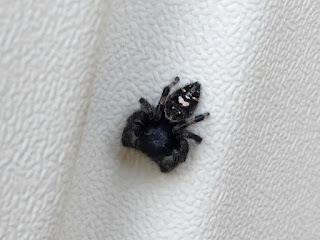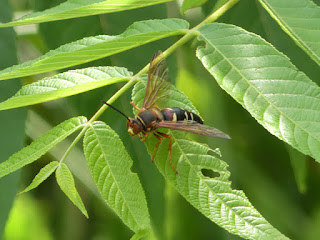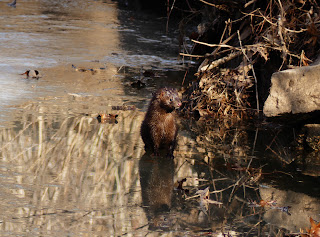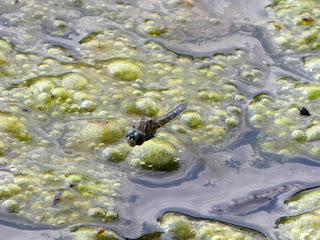Organ-pipe Mud Dauber Wasp

Here's an Organ-pipe Mud Dauber wasp I met back in August. Their iridescent blue wings make them a strong candidate for Shiny Insect of the Week. They get the "mud dauber" part of their name by building nests for their offspring from mud and get the "organ pipe" part of their name from the shape of those nests: vertical "pipes" adjacent to one another. When I first saw this black-bodied, blue-winged wasp, I thought of the Great Black Digger Wasp . I think the biggest difference you might be able to see is that the Organ-pipe Mud Dauber has white on the lower part of their back legs, something you shouldn't see in the Great Black Digger Wasp. On iNaturalist they do list the Great Black Digger Wasp as being an insect that can be mistaken for an Organ-pipe Mud Dauber. Note the mud on the ground. Since it's the females that gather the mud, this is presumably a female. She's probably looking at the mud thinking "this will do nicely".



